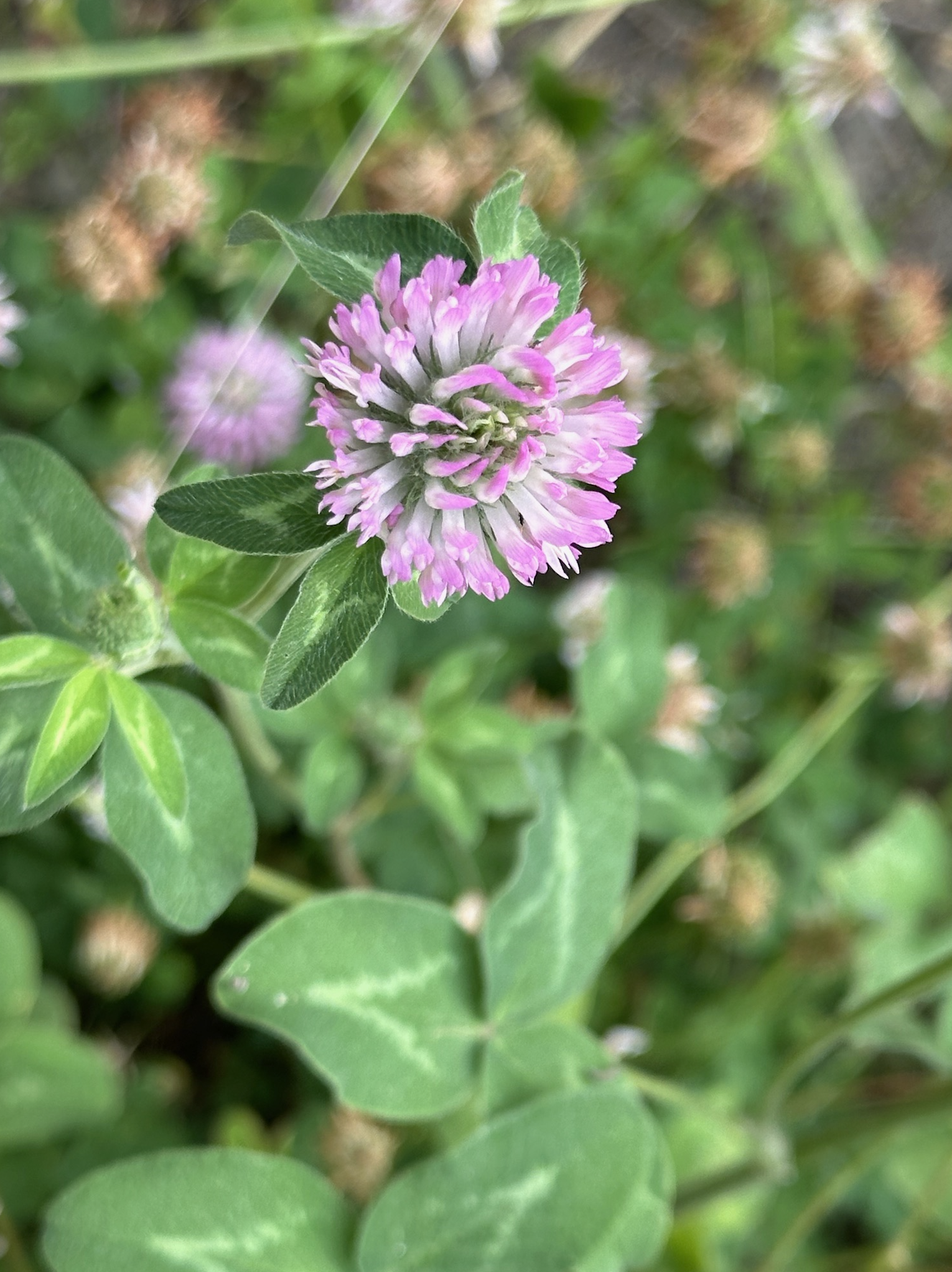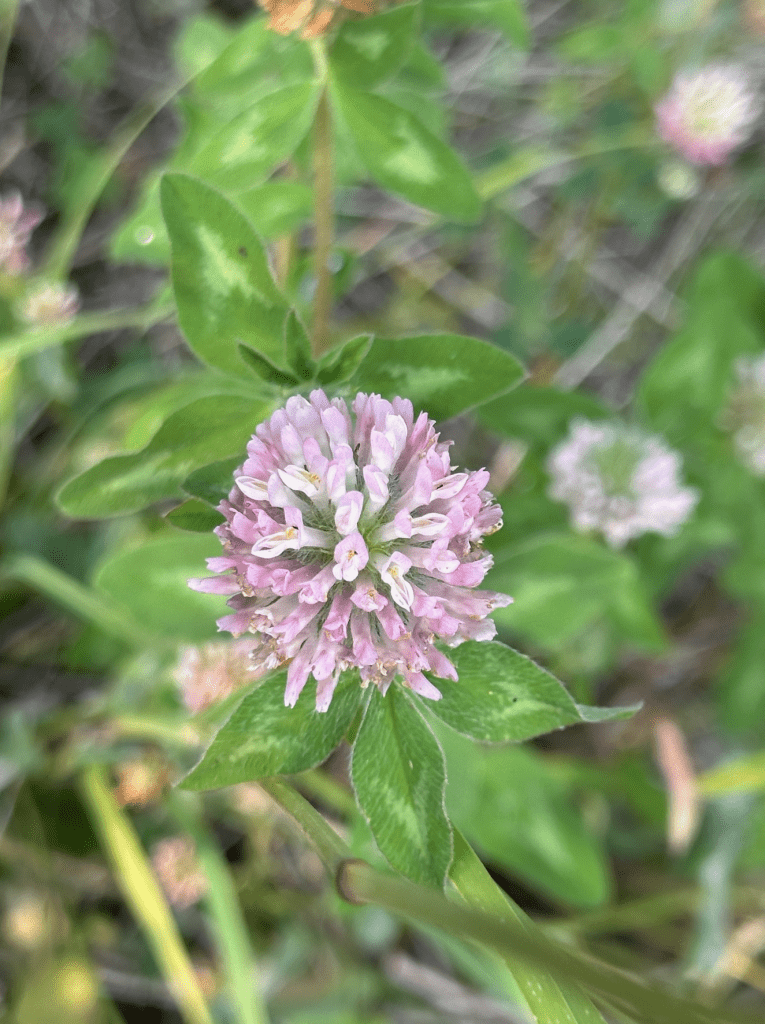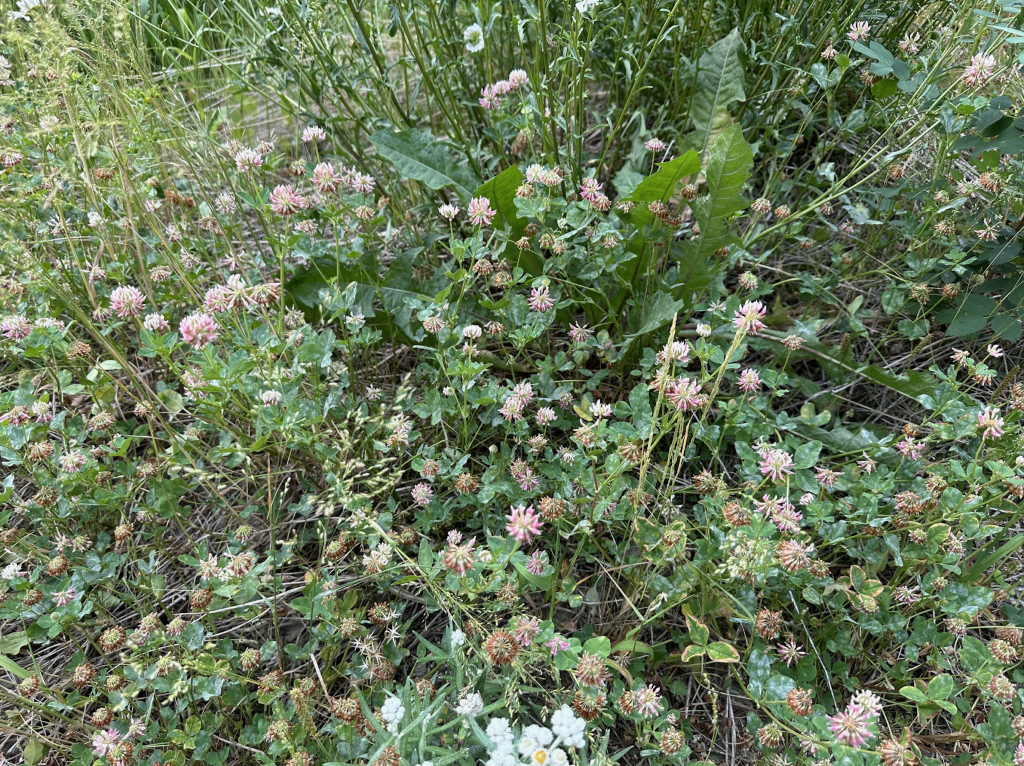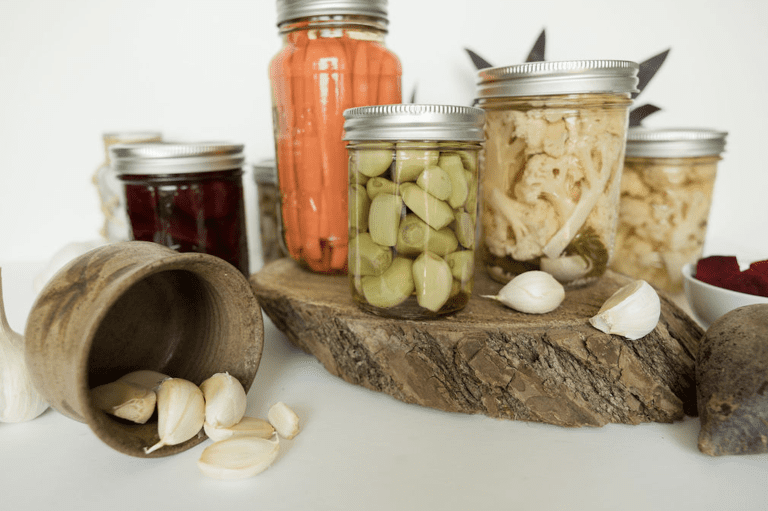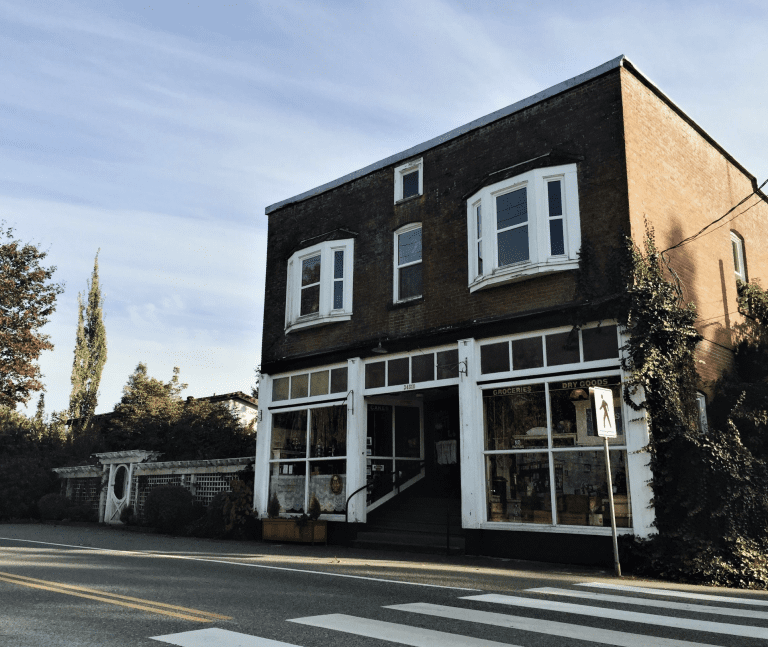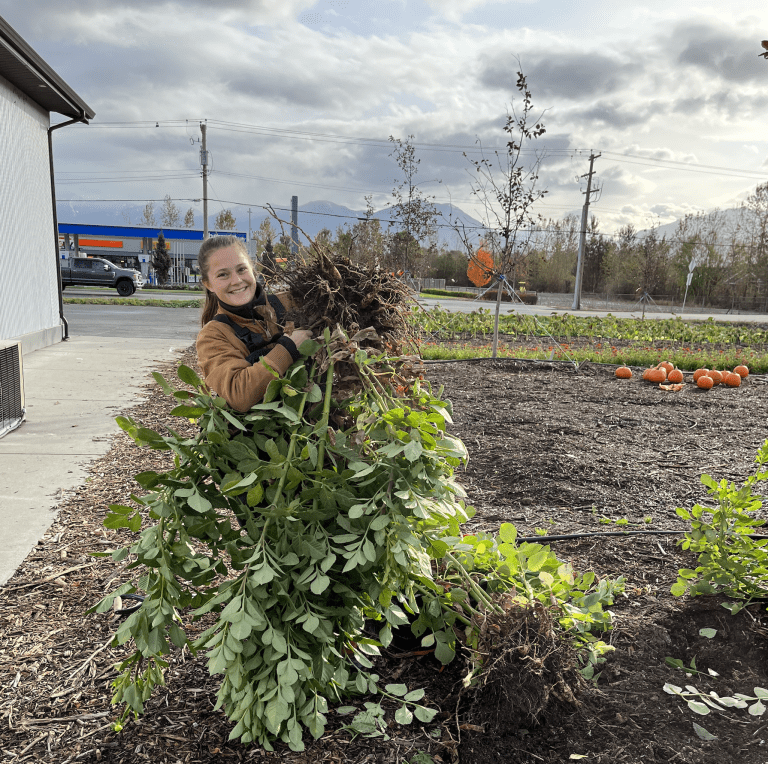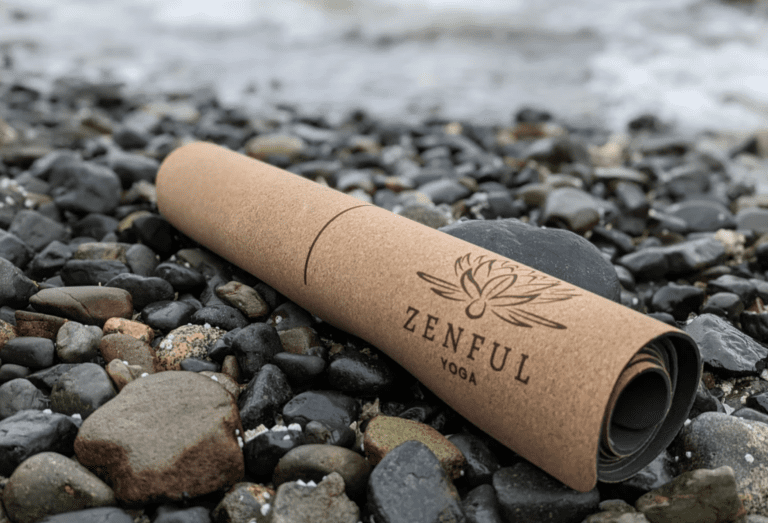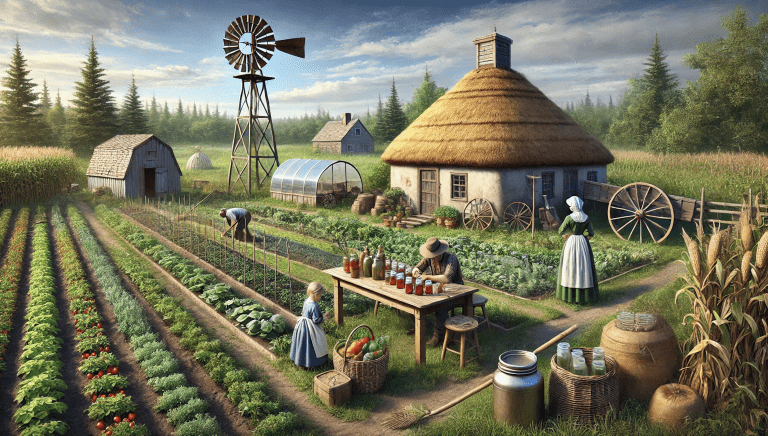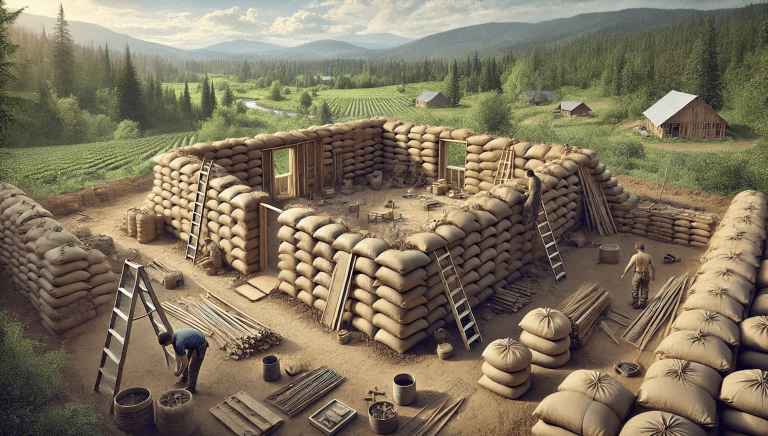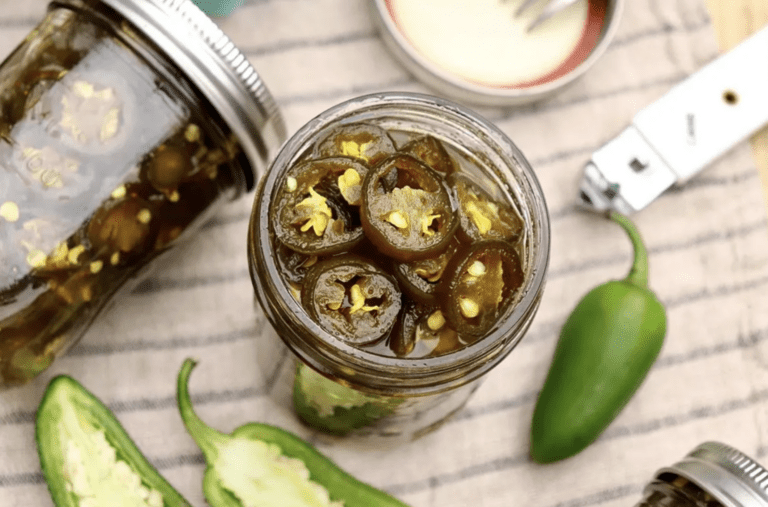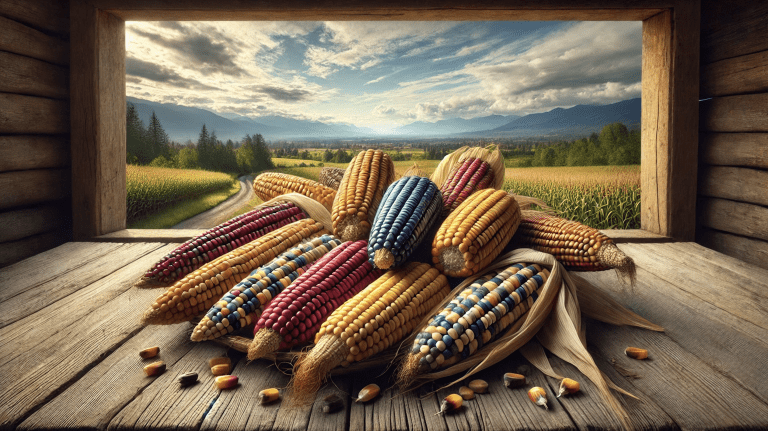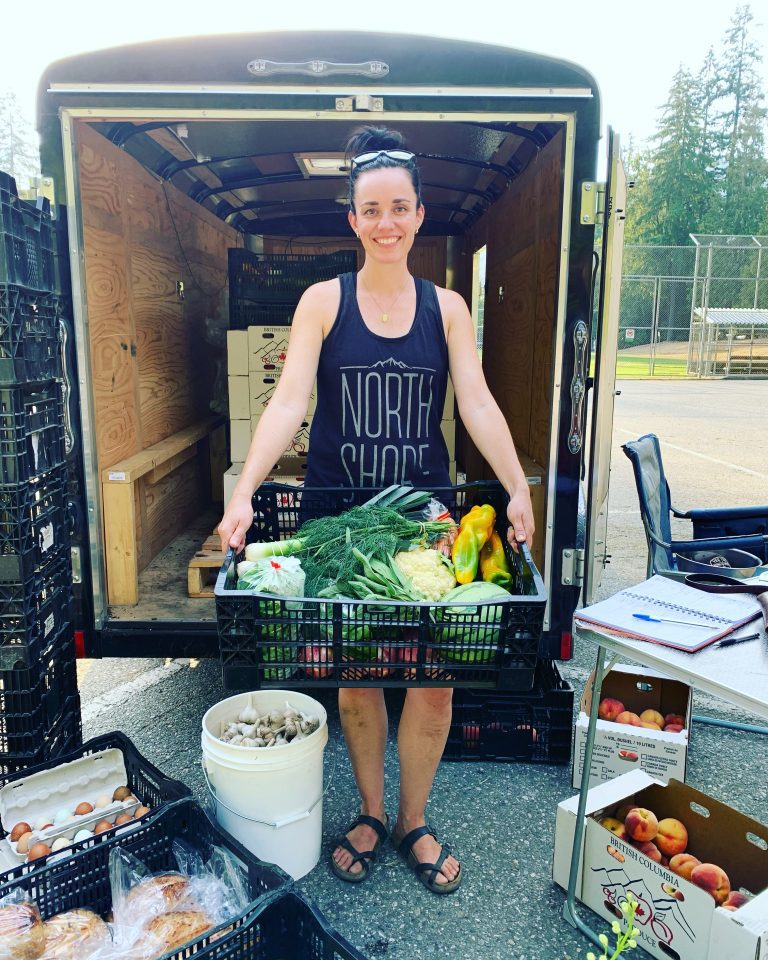Welcome to the Wild Bluebell Homestead blog, a haven where nature’s treasures meet the art of sustainable living. Today, we’re venturing into the verdant heart of the Fraser Valley, British Columbia, a region renowned for its lush landscapes and natural bounty. In this corner of the world, where the mountains whisper ancient tales and the forests hold secrets of old, grows a small, vibrant gem — the wild red clover (Trifolium pratense). This jewel of the Pacific Northwest is not just a plant; it’s a symbol of the rich ecological tapestry and cultural heritage that define our region. Whether you’re a local, from across Canada, or tuning in from around the globe, join us as we delve into the world of wild red clover, uncovering its unique charm, medicinal benefits, and the timeless traditions it carries.
Description and Appearance
- Scientific Name: Trifolium pratense.
- Colour: As the name suggests, the flowers are a bright pinkish-red.
- Size: The flower heads are small and round, about the size of a marble, while the plant itself can reach up to 2 feet in height.
- Leaves: The leaves of the red clover are trifoliate, with three oval leaflets that often have a distinctive pale crescent mark.
- Habitat: They thrive in well-drained soils, commonly found in meadows, grasslands, and along roadsides.
Taste and Culinary Uses
- Taste: Wild red clover blossoms have a mild, sweet flavour with a hint of bean-like taste.
- Culinary Uses: The blossoms are used in teas, salads, and as garnishes. The young leaves can be cooked or eaten raw in salads. Red clover tea is a popular beverage for its purported health benefits.
Finding Wild Red Clover
- Foraging Season: Red clover blooms from late spring to early autumn.
- Foraging Tips: Look for them in sunny meadows and fields. They are often found growing in clusters, making them easy to spot.
Cultural and Historical Significance
- Indigenous Use: Wild red clover has been used by First Nations peoples for its medicinal properties. It was traditionally used to treat various ailments and as a food source.
- Medicinal Uses: Red clover is known for its use in herbal medicine to treat respiratory issues, skin conditions, and as a blood purifier. It is also believed to have estrogen-like properties, which can aid in balancing hormones.
Nutritional Content
- Rich in Vitamins: Wild red clover is a good source of Vitamin C, calcium, magnesium, and potassium.
- Antioxidants: It contains antioxidants, which help in fighting free radicals and reduce inflammation.
Sustainability and Conservation
- Foraging Considerations: Sustainable foraging practices are crucial to ensure the continued availability of wild red clover for both humans and wildlife.
- Environmental Impact: Red clover is beneficial to the environment as it improves soil fertility by fixing nitrogen. However, over-harvesting and habitat loss can threaten its populations, making conservation efforts important.
Culinary Preparations
- Teas and Infusions: Red clover blossoms can be dried and used to make a soothing tea.
- Salads and Garnishes: The flowers can be added to salads or used as colourful garnishes.
- Baked Goods: They can be incorporated into breads, muffins, and cookies for a subtle floral flavour.
As we conclude our journey through the enchanting realm of wild red clover, it’s evident that this humble plant is more than just a wildflower. It is a testament to the beauty and diversity of the natural world, particularly here in the Fraser Valley. In every blossom lies a story of the land, a tale of tradition, and a piece of our shared heritage. At Wild Bluebell Homestead, we cherish these connections to nature and strive to preserve them for future generations. We hope this exploration has not only enlightened you about the wild red clover but also inspired a deeper appreciation for the wonders that lie in our backyards, across Canada, and beyond. May your foraging adventures be fruitful, and your culinary explorations be as rich as the history of this delightful plant. Stay tuned for more tales and tips from nature’s bounty, right here on the Wild Bluebell Homestead blog.
